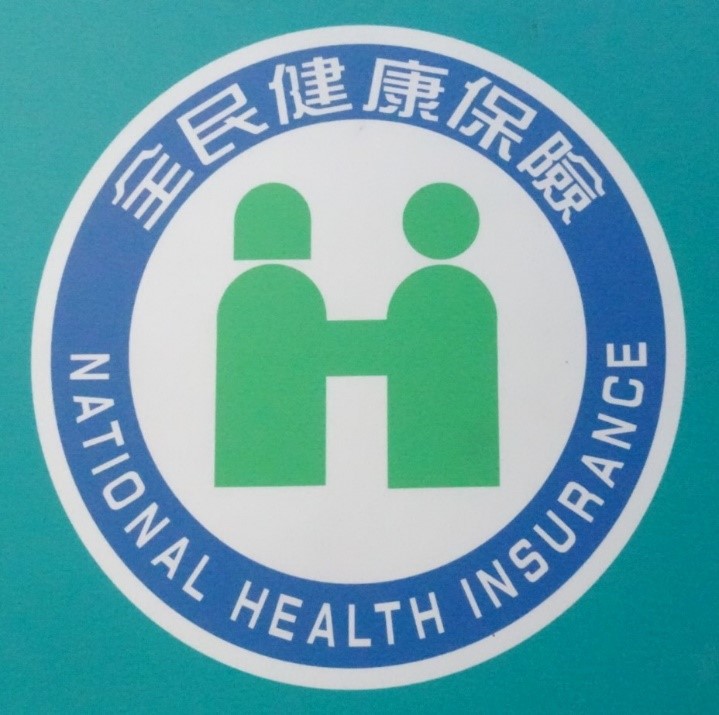Economy & Business
Market research in the healthcare sector
Taiwan’s healthcare system is admired the world over but faces big challenges as it moves into the “digital health” era. Market research is facilitating this development and is also changing in line with the environment in which it works
By Mike Jewell

Taiwan’s healthcare system is widely regarded as one of the best anywhere, underpinned by a single-payer national health insurance (NHI) programme which offers universal coverage with affordable and easy access to high quality care. Market research has played a significant part in the evolution of Taiwan’s healthcare, helping industry players understand patients’ needs and assess their and their competitors’ progress.
In contrast to the insights industry as a whole in Taiwan, which has seen minimal growth since the global financial crisis, research in the pharma sector has been much more robust and is continuing to hold up in 2020, despite the damage the coronavirus pandemic is inflicting on multinational companies across the world. In 2019, healthcare market research spending was almost US$10 million, making up 10% of the total Taiwan insights market, up from just 5% in 2012 and larger than the average share of 7% recorded across the Asia-Pacific region by ESOMAR, the global body that represents the market research industry.
Insights in the pharma sector are also evolving, both in line with developments in market research more generally and in response to the changing healthcare environment and the changing priorities of healthcare clients.

The NHI was established in the mid-1990’s when the government set about transforming the previously fractured and inequitable healthcare system. Almost everyone in Taiwan, including legal foreign residents, is entitled to participate in the NHI scheme, whereas 40% had no access to subsidised medical care before. The current system is extensively used, with an average of 12 physician visits per capita per year, nearly double the frequency of other developed countries and the public’s approval rating is high, at 87%, although doctors’ patient loads are excessive. “In Taiwan, the patient is in Heaven, but the doctor is in Hell!” was the comment from trauma surgeon Chien Li-jian.
There are significant and growing cost and resource pressures on the system in the face of a fast-ageing population and all organisations involved in the industry – healthcare providers, drug makers and medical device manufacturers – face various challenges in a highly competitive and intensely cost-conscious environment. The fundamental problem is that the NHI is living beyond its means, spending more than it receives each year and this is having a negative impact on drug launches, especially for new and innovative medicines. Reimbursement prices tend to be much lower than in OECD countries and drug companies are often therefore reluctant to launch their newest treatments in Taiwan, leading to a situation where patients may be denied the therapy they need. Pharmaceutical companies want to avoid having a low price in Taiwan that other, larger markets might use as a reference point in setting their own pricing.
Nevertheless, the government remains firmly committed to developing the healthcare industry, building the local biomedical sector into a regional hub for doing R&D, thereby making Taiwan an attractive proposition for companies to conduct clinical trials here.
At the same time, as the population ages rapidly, industry attention is moving away from primary care, where most therapies are already off-patent, towards specialised care, for example in the areas of oncology, rare diseases and auto-immune diseases. This change in emphasis is being given added impetus by the emergence of “digital health”, which has the potential to transform healthcare in Taiwan through delivering a better patient experience with improved results at lower costs. It is a transformation which Dr Chen Chien-Jen, former Vice President, renowned epidemiologist and research fellow at Academia Sinica, described in a recent presentation to the ECCT as moving from the “one-size-fits-all medicine” model to the “precision medicine model, delivering the right intervention to the right patient at the right time” and it is generating interest from firms spanning the gap between medical science and technology.
As this change gathers pace, demand for research is focusing ever more on patients and their carers rather than medical professionals. Questa Lin, General Manager of the Health Division of Kantar Taiwan explained why:
“Clients have started to move the focus from physician to patient. Five years ago physicians still had all the power over decision making…but now we’re finding decision making shifting to the patient. Now their [the patients’] awareness and education level [about treatments] is better. And also via social media they exchange information a lot.”
The impact of social media – especially Facebook in Taiwan – is strong. FB patient groups have proliferated across a wide range of diseases and conditions and have become important forums for building up patients’ knowledge bases, for sharing information on new treatments, passing on drug reviews, exchanging experiences and offering advice and passing on any newsworthy items about the particular illness.
These patient groups are generally closed, and, with Taiwan’s particularly strict data privacy laws, the content of the discussions is not available for analysis. However, the presence of the groups and the level of activity within them shows just how much more involved patients have become and how interested they are in acquiring as much knowledge as they can. Hence the reason why healthcare companies want to hear more and more directly from patients, rather than simply relying on the feedback from professionals.
Ms. Lin offered another potent reason for the switch towards patients.
“The second reason for the change in focus is because of payments. Clients are looking at the self-pay market, because more new and expensive drugs are being launched, but the healthcare system has budget constraints. When you launch a new, expensive treatment you wait a year to get indication approval and then another one or one and a half years for reimbursement. We found doctors saying patients might not want to pay, when in fact patients and caregivers DO want to get that treatment and, with the rate of private health insurance already quite high and increasing, affordability is much better.”
Karen Lei, General Manager of IQVIA Solutions, expressed similar sentiments and added:
“Clients are looking for more research engagement with patients, because premium drugs are still self-pay…Pharmaceutical companies are still looking to get their drugs to patients before reimbursement, so they need to push a lot of self-pay programmes before they get reimbursement.
In that scenario, they pay more attention to patient power, with communications and education and how to provide the doctors with enough confidence, knowledge and supporting material for when they talk to patients [about expensive self-pay therapies].
So, we have increased a lot on patient surveys and insights from caregivers about self-pay programmes and we even look into how patients purchase their private medical insurance.”
The upshot of this change in emphasis, as Ms. Lei mentioned, has been a big increase in the number and types of survey conducted with patients at different stages of their journey, in order for companies to work out the best education programmes and other solutions to manage patient pain points.

Both IQVIA and Kantar, the two dominant healthcare research specialists in Taiwan, have responded to a major change in the way clients see research agencies and what they expect from them. In the pharma sector, as across the entire insights industry worldwide, it is no longer sufficient for researchers to be simple data factories. The need is to deliver objective analysis, detailed interpretation and clearly thought through recommendations on future action, answering the question “how can these findings help my business?”
Karen Lei’s view from IQVIA:
“Within the past few years, we have upgraded ourselves as a consulting company. Our primary market research has been transformed into consulting research. This reflects what Taiwan clients expect of data and service. Data is fundamental to give them some idea of how they perform against KPI’s, but our teams can give more insights with actionable recommendations so clients can get real deep-dive analysis to help them with their current programmes or to go back to revisit their strategy.”
While meeting clients’ demands, this move also ties in with IQVIA’s global strategy of becoming a technology-driven healthcare company integrating survey data with clinical research to identify potential molecules for future R&D or for precise site selection for clinical trials.
Kantar’s Lin said the same thing, that Kantar Health’s role was that of a consultant, not just a traditional researcher reporting numbers.
“A lot of the work is on reimbursement submissions, helping clients do the budget impact for payers, helping them write the drug value story, helping them do the cost-efficiency analysis...We support our clients from pre-launch assessment through reimbursement submission to early [post-]launch assessment. And we help clients a lot on expert committees and advisory boards…providing input for treatment guidelines from medical associations.”
The broad change away from purely data-driven research and towards more complete understanding has brought about a switch in the types of research being commissioned. Kantar Health and IQVIA are conducting more in-depth, qualitative investigations, to help firms understand not just how things are, but why they are the way are. The same transformation is happening in all areas of the market research industry – hence the reason why so many now refer to ‘insights’ rather than ‘research’ – but deep-dive analysis is particularly critical in regard to medical matters.
Fulfilling these expectations demands skilled and dedicated teams, as I well know from my own experience trying to handle healthcare research alongside research in other sectors. I quickly realised that the pharma sector is so specialised that practitioners must devote 100% of their time to it if they are to be able to offer clients the desired level of consultancy. The establishment of Kantar Health as a separate entity within the Kantar organisation was a recognition of this reality (as was them leaving me to continue on my merry way in consumer goods, financial services and other types of consumer research!).
IQVIA, by contrast, which was created in 2016 by the merger of IMS Health and Quintiles, has always been focused just on the healthcare sector. In Taiwan, their staff are required to have a healthcare background, coupled with an MBA and/or experience in sales, so that they have a strong commercial mindset, rather than the academic mindset of a traditional market researcher. This allows them to interact with clients on a more equal basis, providing insights and inputs in the context of their clients’ business issues. The tightening of immigration rules in the US and the UK in the wake of Brexit has been a boon in this regard, expanding the talent pool and initiating a reverse “brain drain”, as quality individuals who have completed their education overseas are faced with far fewer employment opportunities abroad and instead are returning to Taiwan to start their careers.

While healthcare research has changed direction to some extent in recent years, healthcare professionals are still an essential source of information, as well as being absolutely central to healthcare companies’ marketing and product strategies. The traditional method of approach to physicians in Taiwan, both for sales teams and for researchers has been in personal, which has always been appreciated by the medical profession, while other forms of approach have largely been ignored.
However, in the face of the increasing financial pressures imposed by the NHI system, manufacturers have sought to guard against erosion of margins by streamlining the operation of their sales forces to reduce costs. There has been a marked decrease in the number of sales reps, with cuts of as much as 50% in some cases over the past ten years and a tighter targeting of activities, aiming at maintaining coverage of a smaller number of key medical centres and regional hospitals, while outsourcing sales drives aimed at clinics and other institutions.
At the same time, healthcare companies have been seeking to exploit alternative channels for delivering market information to the medical profession. In this age of technology, digital engagement has been successfully harnessed in many global markets, although it has so far been slower to gain traction in Taiwan, because of doctors’ widespread preference for personal contact and because of strict regulations governing what can be communicated.
Nevertheless, multinationals have pushed ahead with, for example, e-mail campaigns introducing links to product websites and web-based seminars for training. The protocols implemented to control the spread of Covid-19 have given additional impetus to the use of non-personal communication channels, but, with less draconian measures in place in Taiwan than elsewhere, a certain level of personal interaction has been possible, even if meetings have had to be off-site. Furthermore, many physicians have preferred to participate in company-sponsored webinars and trainings in a group setting over a meal, rather than logging in individually from their surgery. Even after the crisis passes, it is inevitable that the multinationals will continue to drive increased use of digital media, but it is equally certain that the medical profession will be remain reluctant to accept it fully.
A desire to switch to online research methodologies is going hand-in-hand with digital sales communications, with commissioning companies again seeing this as a means of reducing cost. However, the insights providers are encountering some problems in making this happen, the first being Taiwan doctors’ reluctance to answer question any other way than in person.
Secondly, an online questionnaire is a completely different beast than a face-to-face questionnaire. Brevity, simplicity, and smart visual design are keys to optimising response rates. Merely putting an established face-to-face questionnaire online will not lead to a successful survey, since most such questionnaires are too long, too wordy, and too complicated and potential respondents take one look, then close the page without answering. In the pharmaceutical world, the amount of detailed information required goes way beyond what might reasonably be expected to be generated from an online survey, so continuing with personal interviews remains the most effective approach.
Covid-19, though, has had an impact on the implementation of patient-based surveys, with many respondents reluctant to take part in personal interviews. In some cases, it has been possible to substitute video interviews, or to install tablets in hospital and clinic waiting rooms, so that patients are able to self-complete questionnaires, but, in other cases, focus group discussions have had to be cancelled altogether. Overall, however, the insight companies have seen the level of demand for research hold up encouragingly. It remains to be seen whether this relative buoyancy will endure through 2021, given that multinational players are likely to be looking for further cost savings to reduce the negative impact of the anticipated coronavirus-induced global recession, but it is clear that market research will continue to play an important role in the ever-evolving healthcare sector.